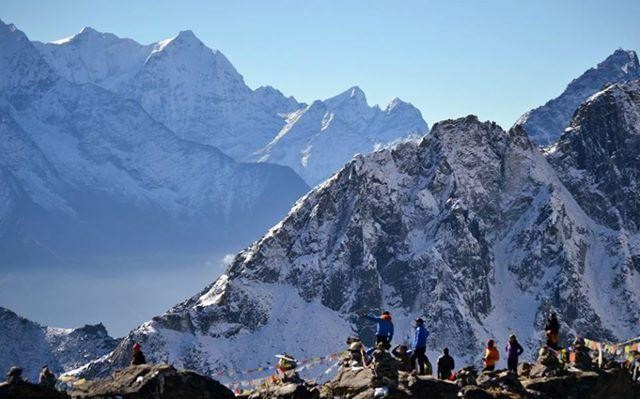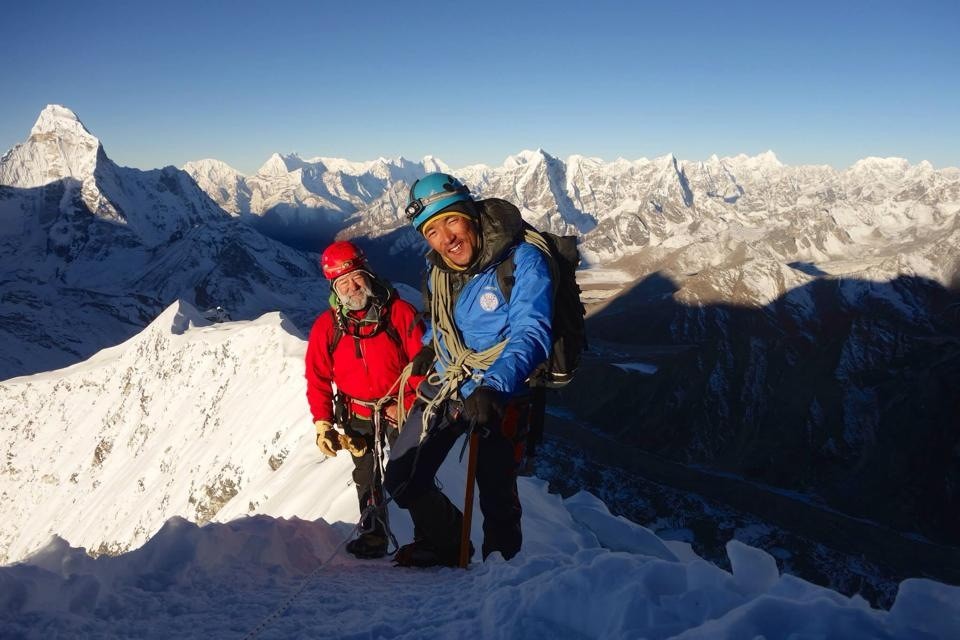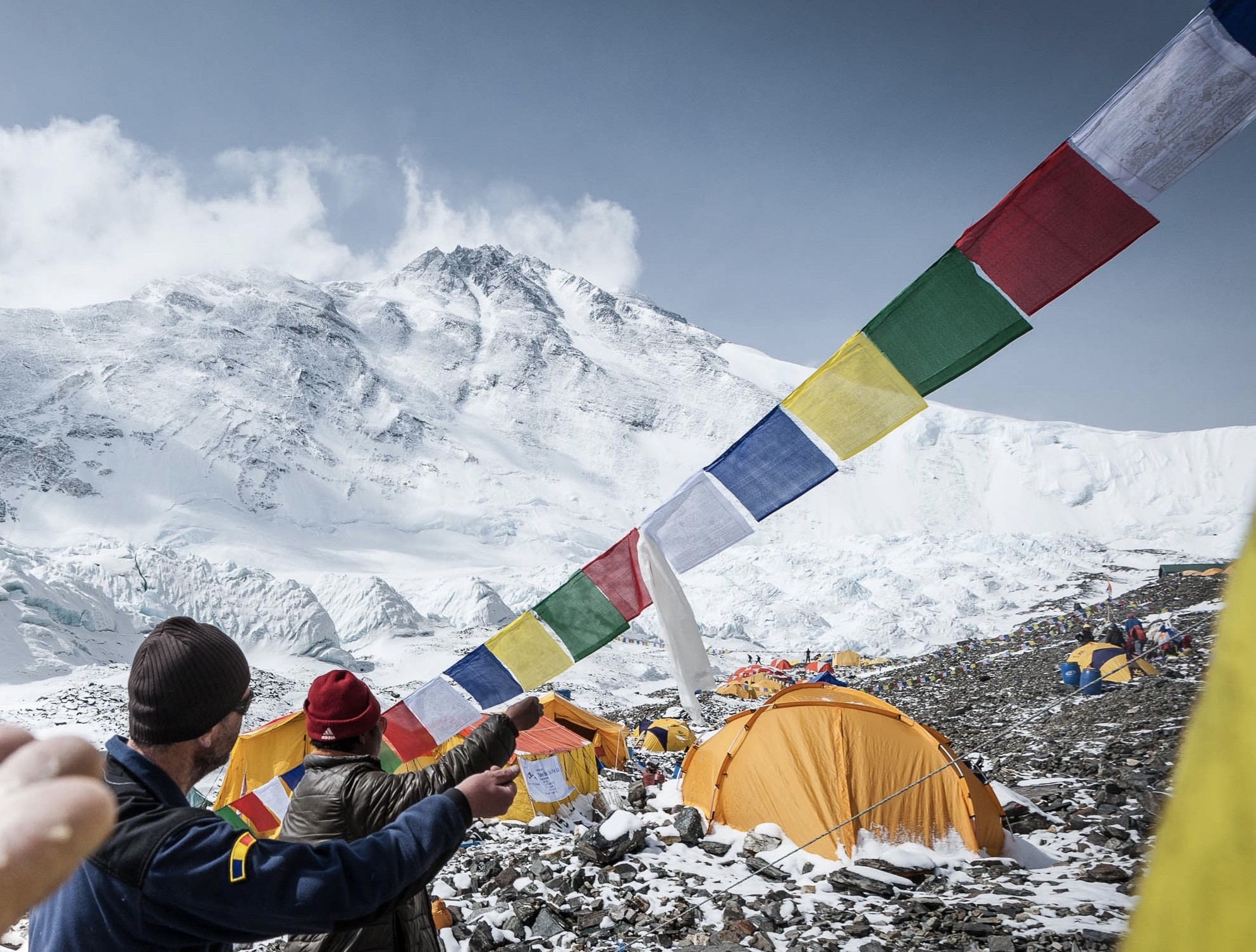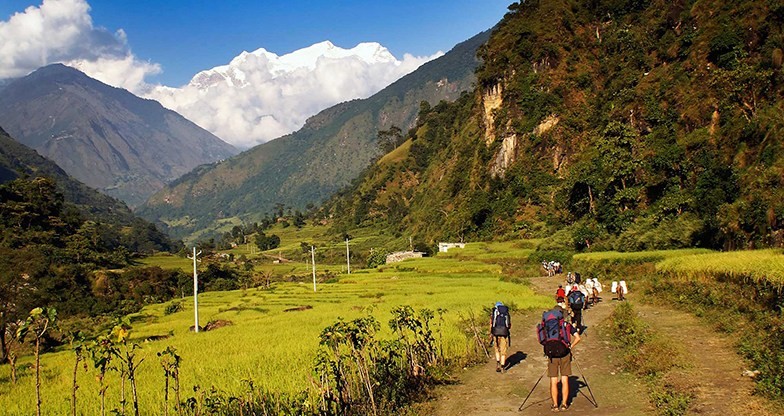

Everest three passes trekking is a complete package of Everest region trekking in Nepal which offers the ultimate and complete trekking experience in the Everest region. The three-pass trek offers the trekkers with stunning scenery and incredible views with the ultimate and complete trekking experience in the Everest region. This trip is a physically demanding trekking adventure that crosses 3 high passes linking the four distinct valleys of Bhotekoshi, Gokyo, Khumbu, and Imja Tse. Crossing the rugged high passes of Renjo la (5388 m), Cho La (5380 m), and Kongma La (5535 m) with climbing of the three peaks of Gokyo Ri (5483 m), Kalapathar (5545m), and Chukung (5550 m) and the hike to EVEREST BASE CAMP makes this trek the incomparable and unforgettable trekking experience in Nepal.
This challenging trek will more than satisfy the ambitious trekker intent on crossing high passes without the commitment of any technical climbing. This adventure is an ideal choice for a true adventure seeker looking for a challenging trek in the Everest region which also involves crossing high mountain passes and glaciers.
The Three Passes Trek is certainly a physically demanding challenge . But if you have the required level of fitness, it’s incredibly rewarding. Our itinerary allows for plenty of time to acclimatise and includes rest days so you can soak up the sights, sounds and culture of the towns and villages we pass through. All in all, if you’re looking to make the most out of a trip to the Khumbu region, and you’re ready for a tough physical challenge our Three Passes Trek will tick all your boxes.

Trip Highlight
DAY
1
DAY
2
DAY
3
DAY
4
DAY
5
DAY
6
DAY
7
DAY
8
DAY
9
DAY
10
DAY
11
DAY
12
DAY
13
DAY
14
DAY
15
DAY
16
DAY
17
DAY
18
DAY
19
DAY
20
The main emphasis while trekking is on keeping warm and dry while still being lightweight. You should bring a rucksack or backpack for the gear required during the day. Your pack should contain items such as warm clothes, a jacket, a camera, water bottles, a personal first aid kit, and snacks. The weight limit is 5kg. A porter will carry the rest of your personal equipment packed in a duffel or kit bag. The weight limit for your duffel bag is 15 kg however it is different in the case of peak climbing and expedition.
A Note on Packing
For your international flights, we recommend that you pack all your equipment in your two duffle bags or suitcase. Do not simply pack your backpack (since the straps can be damaged by the baggage handling machines). It is important to lock these bags for their trip. Depending on the airport, you may be able to put your travel locks on after TSA has searched the bags. If not, Lock the bags with Zip Ties. If the TSA cuts off the zip-tie to search your bag, they will replace it. You will still need the travel locks to lock your bags in the hotel and during the trek. Generally, you will take one duffel on the trek , and leave one in the hotel in Kathmandu with your belongings for your time in the city. Your trek in duffel will only be accessible in the evenings (with items such as changes of clothing, sleeping bag), and your day pack will hold vitals such as water, layering, blister kit, and camera.
FOOTWEAR
Conclusion:
As the weather condition is unpredictable in the Himalayan region, you need to be prepared at all times. A day can start sunny with clear skies and later become cold and windy at the high altitudes.
Sometimes, it can rain and snow during the trekking period. You need to remember that for a successful trekking journey, your physical comfort must be the first priority.
Note:
Please note that these items listed above will vary according to the season, trek duration. Please remember that your luggage will be carried by the porter, but you need to carry a daypack on your own. We also suggest you pack only necessary items to keep the weight of your equipment to a minimum.
1
The Everest High Passes Trek is also known as the Three Passes Trek or Everest Base Camp via Three Passes Trek or High Land of Everest Valley Trek. It is in fact, one of the hardest treks that Himalayan Glacier offers to hardcore trekkers and adventure-seekers. The journey is known as a complete circle of the high land of the Everest Valley following the treacherous three passes of Renjo La, Cho La and Kongma La before Everest Base Camp visit. The challenging trip is indeed a long walk in the remote land, high up in the mountain in the middle of nowhere. For this adventurous trek, you must be very fit and highly experienced in the Himalayas. We recommend trekkers and enthusiastic hikers to first do the Everest Base Camp Trek or Gokyo Lake Trek before attempting on this one. However, if you are a seasoned trekker or have already experienced the Kilimanjaro Climb or trekked in the Andes or in Patagonia, then you are unquestionably eligible for this one.
2
Everest High Passes Trek is best done in pre-monsoon season i.e. from March to May and post-monsoon season i.e. from late September to December. It is also possible to do this trek in February and early September but the trek is best preferred during the above months.
3
The Everest 3 passes trek is a challenging and adventurous trekking route in the Everest region of Nepal. The trek involves crossing three high mountain passes above 5,000 meters (16,404 feet): Kongma La Pass (5,535m/18,159ft), Cho La Pass (5,420m/17,782ft), and Renjo La Pass (5,360m/17,586ft). The trek also includes visits to popular destinations in the region, such as Everest Base Camp and Gokyo Lakes.


